Please note that the financials in this complete free business plan are completely fictitious and may not match the text of the business plan below. This free business plan demonstration purposes only. If you are interested in purchasing the completed editable MS Word and Excel documents for this business plan, please click the button below! Also, the text of the business plan is formatted with a fully automated table of contents.
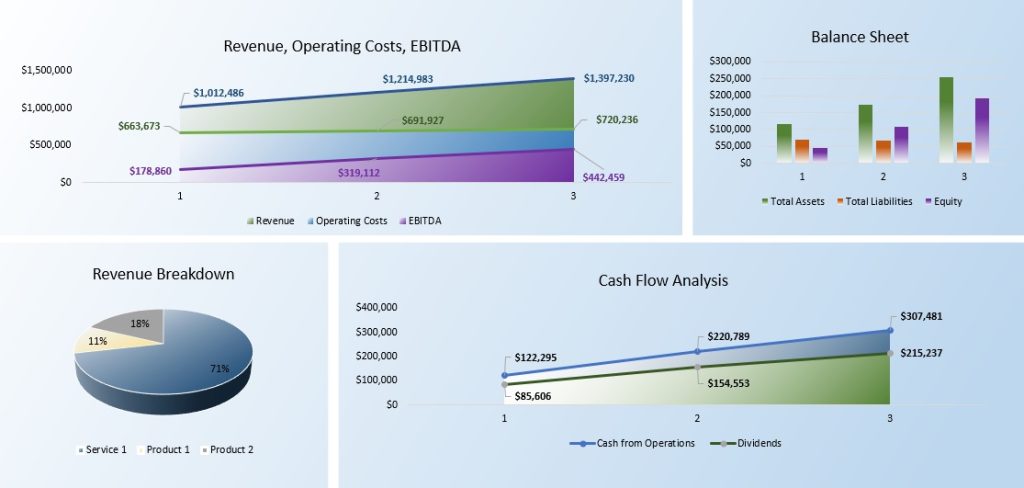
1.0 Executive Summary
The purpose of this business plan is to raise $100,000 for the development of a currency exchanging service while showcasing the expected financials and operations over the next three years. Currency Exchanger, Inc. (“the Company”) is a New York based corporation that will provide customers with the ability to exchange most currencies for US dollars. The Company was founded by John Doe.
1.1 Operations
As stated above, the Company will be actively engaged in maintaining a retail location that allows individuals to exchange foreign currency for US dollars. The business will partner with major networks in order to effectively render this service to its customers. The business will earn transaction fees of 5% of the total amount of currency exchanged. The business will also earn substantial secondary incomes from ancillary distribution fees and services rendered to customers that operate outside of the Company’s target market radius. The third section of the business plan will further describe the products offered by the Currency Exchanger.
1.2 The Financing
Mr. Doe is seeking to raise $100,000 from as a bank loan. The interest rate and loan agreement are to be further discussed during negotiation. This business plan assumes that the business will receive a 10 year loan with a 9% fixed interest rate. The financing will be used for the following: • Development of the Company’s location. • Financing for the first six months of operation. • Capital to purchase the Company’s licenses and currency. Mr. Doe will contribute $10,000 to the venture.
1.3 Mission Statement
Currency Exchanger’s mission is to become the recognized leader in its targeted market for currency exchanging services.
1.4 Management Team
The Company was founded by John Doe. Mr. Doe has more than 10 years of experience in the retail management industry. Through his expertise, he will be able to bring the operations of the business to profitability within its first year of operations.
1.5 Sales Forecasts
Mr. Doe expects a strong rate of growth at the start of operations. Below are the expected financials over the next three years.
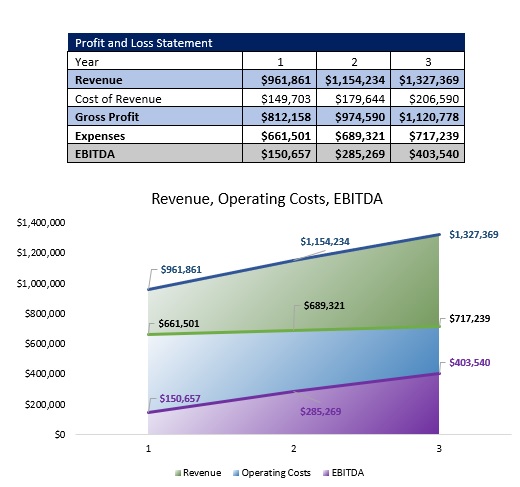
1.6 Expansion Plan
The Founder expects that the business will aggressively expand during the first three years of operation. Mr. Doe intends to implement marketing campaigns that will effectively target travelling individuals within the target market.
2.0 Company and Financing Summary
2.1 Registered Name and Corporate Structure
Currency Exchanger, Inc. The Company is registered as a corporation in the State of New York.
2.2 Required Funds
At this time, the Currency Exchanger requires $100,000 of debt funds. Below is a breakdown of how these funds will be used:
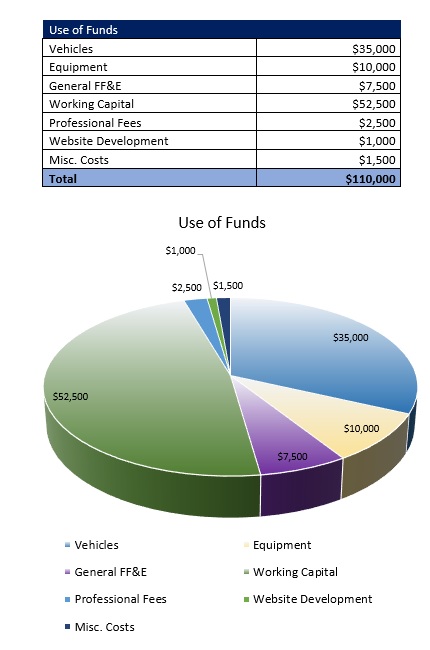
2.3 Investor Equity
Mr. Doe is not seeking an investment from a third party at this time.
2.4 Management Equity
John Doe owns 100% of the Currency Exchanger, Inc.
2.5 Exit Strategy
If the business is very successful, Mr. Doe may seek to sell the business to a third party for a significant earnings multiple. Most likely, the Company will hire a qualified business broker to sell the business on behalf of the Currency Exchanger. Based on historical numbers, the business could fetch a sales premium of up to 4 times earnings.
3.0 Operations
Below is a description of the services offered by the Currency Exchanger.
3.1 Currency Exchanging Services
As stated in the executive summary, the Currency Exchanger intends to provide customers with the ability to exchange most foreign currencies for US dollars to traveling and returning individuals. The business will charge a fee equal to 5% of the total amount exchanged with an individual. In the future, the business may also develop ancillary services such as money order production and check cashing services to compliment the Company’s primary revenue center of currency exchanging for traveling parties.
4.0 Strategic and Market Analysis
4.1 Economic Outlook
This section of the analysis will detail the economic climate, the currency exchanger industry, the customer profile, and the competition that the business will face as it progresses through its business operations. Currently, the economic market condition in the United States is moderate. The meltdown of the sub prime mortgage market coupled with increasing gas prices has led many people to believe that the US is on the cusp of a double dip economic recession. This slowdown in the economy has also greatly impacted real estate sales, which has halted to historical lows.
4.2 Industry Analysis
According to the US Economic Census, there are approximately 7,000 non-bank financial intermediaries within the United States. The industry generates $12 billion per year and provides jobs to more than 35,000 people. Annual payrolls are approximately $4 billion per year. Currency exchangers fall under the industry category of miscellaneous intermediation. This is a mature industry and the future growth rate of the industry is expected to remain in lockstep with that of the general economy. At this time, there are no pieces of outstanding legislation that impact the way that the Company will need to do business (a significant amount of industry regulation started after the events of 9/11).
4.3 Customer Profile
Currency Exchanger’s average end user will be a lower middle to middle class person living in the Company’s target market. Common traits among clients will include: • Is traveling to or from the United States • Will convert $100 to $1,000 from the Company’s location.
4.4 Competitive Analysis
This is one of the sections of the business plan that you must write completely on your own. The key to writing a strong competitive analysis is that you do your research on the local competition. Find out who your competitors are by searching online directories and searching in your local Yellow Pages. If there are a number of competitors in the same industry (meaning that it is not feasible to describe each one) then showcase the number of businesses that compete with you, and why your business will provide customers with service/products that are of better quality or less expensive than your competition.
5.0 Marketing Plan
Currency Exchanger, Inc. intends to maintain an extensive marketing campaign that will ensure maximum visibility for the business in its targeted market. Below is an overview of the marketing strategies and objectives of the Currency Exchanger.
5.1 Marketing Objectives
- Implement a local campaign with the Company’s targeted market that will connect the business to check cashers and money order stores that do not have currency exchanging services.
- Maintain strong connections with companies that act as networks for currency exchanging.
- Develop an online presence by developing a website and placing the Company’s name and contact information with online directories.
5.2 Marketing Strategies
Mr. Doe intends on using a number of marketing strategies that will allow the Currency Exchanger to easily target men and women within the target market. These strategies include traditional print advertisements and ads placed on search engines on the Internet. Below is a description of how the business intends to market its products to retail locations. The Currency Exchanger will also use an internet based strategy. This is very important as many people seeking local services, such as currency exchangers, now the Internet to conduct their preliminary searches. Mr. Doe will register the Company with online portals so that potential retail customers can easily reach the Currency Exchanger business. The Company will also develop its own online website. The Company will maintain a sizable amount of print and traditional advertising methods within local markets to promote the non-bank financial intermediary that the Company is selling.
5.3 Pricing
In this section, describe the pricing of your services and products. You should provide as much information as possible about your pricing as possible in this section. However, if you have hundreds of items, condense your product list categorically. This section of the business plan should not span more than 1 page.
6.0 Organizational Plan and Personnel Summary
6.1 Corporate Organization

6.2 Organizational Budget

7.0 Financial Plan
7.1 Underlying Assumptions
- The Currency Exchanger will have an annual revenue growth rate of 16% per year.
- The Owner will acquire $100,000 of debt funds to develop the business.
- The loan will have a 10 year term with a 9% interest rate.
7.2 Sensitivity Analysis
In the event of a more severe economic downturn, the business may have a decline in its revenues. However, the high gross margins generated by the business will ensure that the business will maintain profitability despite deleterious economic conditions.
7.3 Source of Funds

7.4 General Assumptions

7.5 Profit and Loss Statement

7.6 Cash Flow Analysis
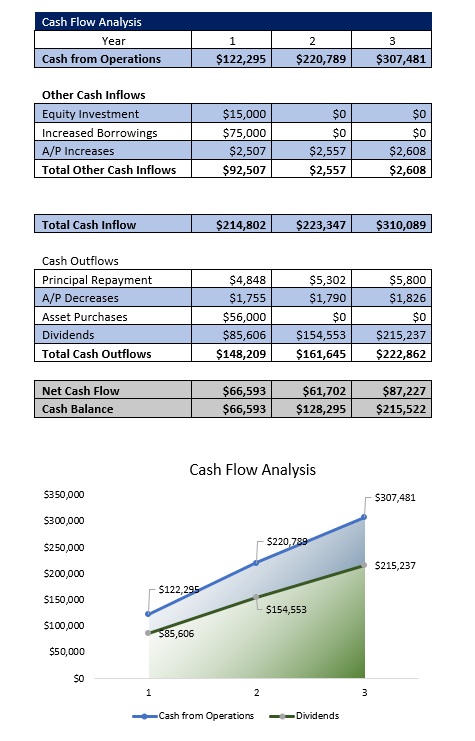
7.7 Balance Sheet

7.8 Breakeven Analysis
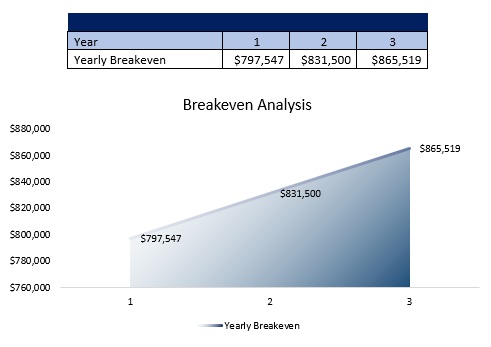
7.9 Business Ratios

